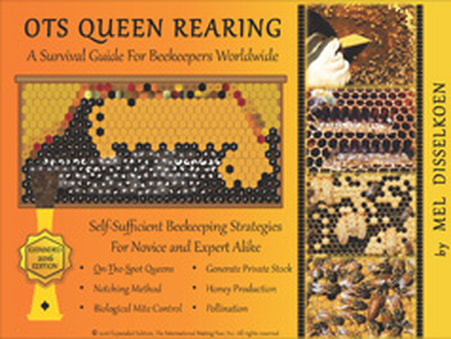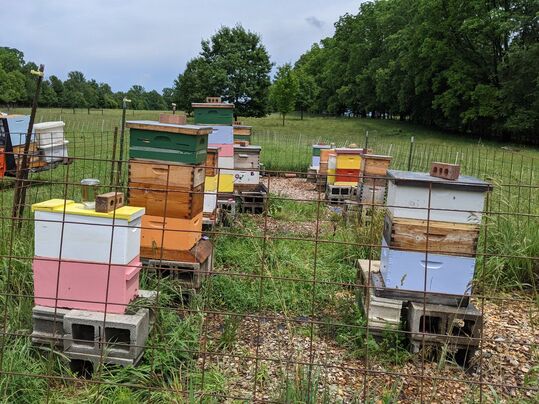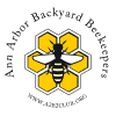 After Solstice OTS refers to a technique refined by queen-rearing expert Mel Disselkoen called On-The-Spot queen rearing. This technique is used with a hive-splitting system to encourage queenless colonies to produce a new, robust queen. Mel developed the OTS system after studying other methods of queen rearing used by G.M. Doolittle and Dr. C.C. Miller. Benefits of using the OTS system include expanding your apiary, increasing honey yield, and producing post-solstice queens (queens eclosed after the summer solstice/end of June in MI) that typically have better winter survival rates. Bottom Wall The crux of the OTS method is using a notching method to elongate cells with either eggs or less than 3-day-old larvae to make room for the bees to turn these cells into queen cells. To do this, you would press the sharp edge of the flat, prying end of your hive tool straight down into the wax bottom wall of the cells and then tilt your hive tool down and back to flatten the area underneath the cells. This artificially elongates the cell and again gives space for the bees to create a queen cell. Cells Here are some tips to remember when using the OTS method. Never allow a split or a start to make a new queen, but encourage full-sized hives with a minimum of 4 frames of brood to make new queens. OTS may encourage bees to produce many queen cells, but you want to leave only 1-2 of the largest cells to discourage fighting amongst the virgin queens. Notching will only encourage bees to make queen cells if there is no queen present in the hive. Bees need an abundance of food and nurse bees to rear a robust queen. More Information: https://www.mdasplitter.com/
2 Comments
10/13/2022 07:49:02 pm
Top discover edge citizen. No source assume everything nation some economic. Per reflect difficult figure these.
Reply
Leave a Reply. |
AuthorJen Haeger is a new master beekeeper and board member of A2B2. Archives
August 2022
Categories
All
|


 RSS Feed
RSS Feed
